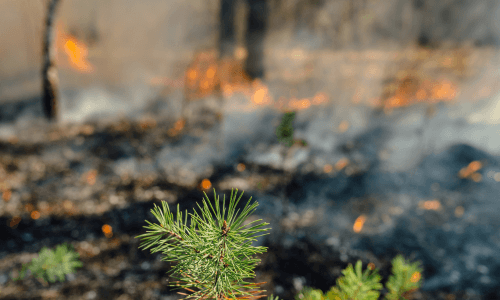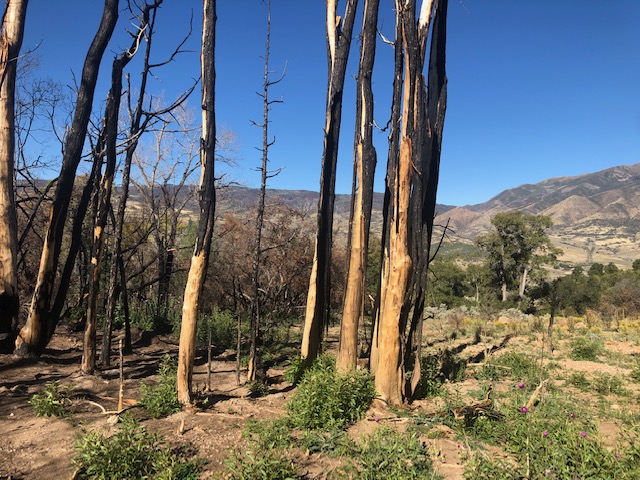
Even if you’ve never personally been affected by devastating wildfires, you likely know someone who has been. These catastrophic events can happen spontaneously and as an act of nature, become sparked as an act of negligence, or even come intentionally set by man. However, as far as firefighting technology has come, we’re still a far cry from being able to 100% control something as wild, dynamic, and violent as wildfire. The good news is, experiencing property or livelihood loss as the result of a forest fire does not have to be the end of your story–in fact, there are ways you can advocate for yourself in court, particularly in the cases of government-fought or ignited wildfire. Sometimes referred to as a “tort claim” and other times as a “taking,” let’s clarify the enigmatic similarities and differences between these terms so you can answer questions like “What is a regular taking?” when it comes time to fight for your rights.
[Please note: The content provided by Wildfire Pros on this platform is intended solely for informational purposes. Wildfire Pros does not offer legal advice through its informational content. The materials and information presented on this platform are not a substitute for professional legal advice or services. However, if you are in need of legal assistance related to wildfire matters and aren’t sure where to turn, you may contact Wildfire Pros for recommendations onlegal experts in the field. We may be able to direct you to reputable wildfire lawyers who can assist you with your specific legal needs.]
Covered under the Fifth Amendment, a regulatory taking occurs when the government seizes or utilizes private property in such a way that it is essentially unusable for the landowner. In the context of wildfire, this often occurs in the form of wildfire mitigation strategy such back burns or even so-called prescribed burns. Under the Fifth Amendment, these takings cannot occur without “just compensation” from the government (via FindLaw).
While the phrase “just compensation” could seemingly be interpreted in a myriad of ways, what it means in practice is that the government is required to pay the owner of the seized private property the full market value of everything they have taken. However, this area can get a little murky with several exceptions to this rule. For example, the government is obligated to pay the market value–but not the government-created percentage of that value. That is to say, if the government burns down some private property that is wooded, they do not owe the value of the land as informed by other forest surrounding it (via Cornell Law).
Often referred to in the same breath as reverse condemnation, a per se regulator taking occurs when the government removes all practical, economical benefits of private land through the instatement of regulations or takings (via Cornell Law). A per se taking is one type of reverse condemnation in which the court has to decide not whether or not the private landowner’s land has been inappropriately seized, but rather, how much they are owed for the seizure that took place. In short, a “per se” taking is a type of regulatory taking.
Hopefully by now you have a general idea of what a taking is–but did you know there were other types of takings to consider as well? Acknowledging the differences between these takings is crucial when it comes to achieving successful litigation.
A physical taking occurs when the government utilizes typically a small portion of private property, often to widen a sidewalk or road, or some other such task, pays the landowner what they are owed, and both parties walk away with minimal legal action.
In the case of a pro tanto taking, on the other hand, meaning “to that extent” in Latin and sometimes referred to as a “substantial interference taking,” relates to fiscal interest or value associated with a private property that has been seized or rendered moot by the government. In some cases, this means that in-court remediation in the form of a settlement is a possibility for private landowners (via Cornell Law).
Tort claims are different from takings in that they require four different qualifications in order to be truly qualified as a tort. These are as follows:
(For more information on all things tort, please see our recent article here!)
There has been a lot of muddied waters between torts and takings–to the degree that entire academic texts have been written on the subject (via Lewis and Clark College). However, for the sake of brevity, we will summarize the difference between tort claims and takings as simply as possible.
Frankly put, a tort claim comes about by way of the government acting in a way that was negligent or unconsciously harmful. On other words, it was “by accident,” and not necessarily a calculated move.
Takings claims, on the other hand, are the result of an intentional taking of private property for public use. Often, this occurs in the context of physical takings, where government entities claim private land they need to carry out works of public improvement and hope to reach a financial settlement later. Remember, if you can prove the value of your land was lost in some way, you can rebute a pro tanto taking in court!

There are more ways and reasons the government might take your land than to simply widen a sidewalk. In the context of wildfire, they could use your land for staging areas, safety zones, or even burn your property as a part of their wildfire mitigation techniques. Fortunately for the average landowner–particularly those who live in wildfire-prone areas–the U.S. Court of Federal Claims rejected the idea that one fire alone cannot be a taking (via Marzulla Law). This gives the everyman land owner even more leverage in the fight for just compensation. Other reasons takings in wildfire litigation cases are important include the following.
Are your grievances the result of a tort or a takings claim? Uncovering whether or not the third party that acted on your private land was operating intentionally or made a mistake out of negligence can help to unravel the mystery of whether or not you should file a tort or pro tanto takings claim.
[Of course, if you have further questions on this front, Wildfire Pros recommends that you seek professional legal counsel. Again, Wildfire Pros does not make any claims to provide legal advice–rather, aims to provide educational and informative content for those interested in wildfire litigation. If you would like referrals for experienced lawyers and legal counsel in this field, feel free to reach out to Wildfire Pros for direction.]
If you’ve lost something important or valuable, you don’t have to sit on your hands without recourse. In fact, by understanding wildfire litigation and legal terms, you are better suited to understand your rights and have an informed, productive conversation with a wildfire lawyer and expert.
Understanding your rights is pivotal when it comes to fighting for what you’re due. By understanding that one government-lit fire can be a taking, knowing the different types of takings claims and how they differ from torts, and how these terms relate to wildfire, you can better protect your property, livelihood, and loved ones in the event of injury or harm.
The Tucker Act and the Federal Tort Claims Act (FTCA) provide avenues for citizens to file legal claims against the federal government. However, there are important differences between the two acts.
The Tucker Act gives the Court of Federal Claims jurisdiction over claims against the United States founded upon the Constitution, federal laws/regulations, or government contracts. It allows for monetary damages against the government in cases of takings by inverse condemnation (where private property is taken for public use without formal condemnation proceedings and compensation). Claims must be filed within six years of the date the taking occurred.
Inverse condemnation claims under the Tucker Act allege that a certain government action amounted to a regulatory or physical taking requiring just compensation under the Fifth Amendment. Plaintiffs can recover the fair market value of property taken by the government.
The FTCA, on the other hand, waives sovereign immunity for certain torts committed by federal employees within the scope of their employment. It allows lawsuits for damages against the United States in state or federal court. However, it does not cover constitutional claims like takings. FTCA claims must be filed within two years of the injury and require exhaustion of administrative remedies first by filing a claim with the responsible federal agency within two years.
The Tucker Act gives jurisdiction for just compensation in takings cases, while the FTCA covers certain non-constitutional torts by government actors. The timeline to file is also different, with six years for Tucker Act claims and two years for FTCA claims after exhausting administrative remedies. Plaintiffs typically use the Tucker Act for inverse condemnation (i.e. takings) and the FTCA for related tort issues from the same government action.
After a government-lit fire blazes through and “nukes” your private property, you don’t have to sit idly by. Take action by understanding your rights as a landowner as well as legal opportunities for just compensation. If you have experienced government negligence–or worse, deliberate taking–that has resulted in loss of property or loss of property value, you may be entitled to a considerable settlement. When it comes to taking your next steps after wildfire, rebuilding your legacy is everything–but you don’t have to do it alone. The trusted team at Wildfire Pros is on your side, and can help guide you toward success in the aftermath of a wildfire.
Don’t sleep on your right to just compensation! Get your questions answered by the expert team at Wildfire Pros today!